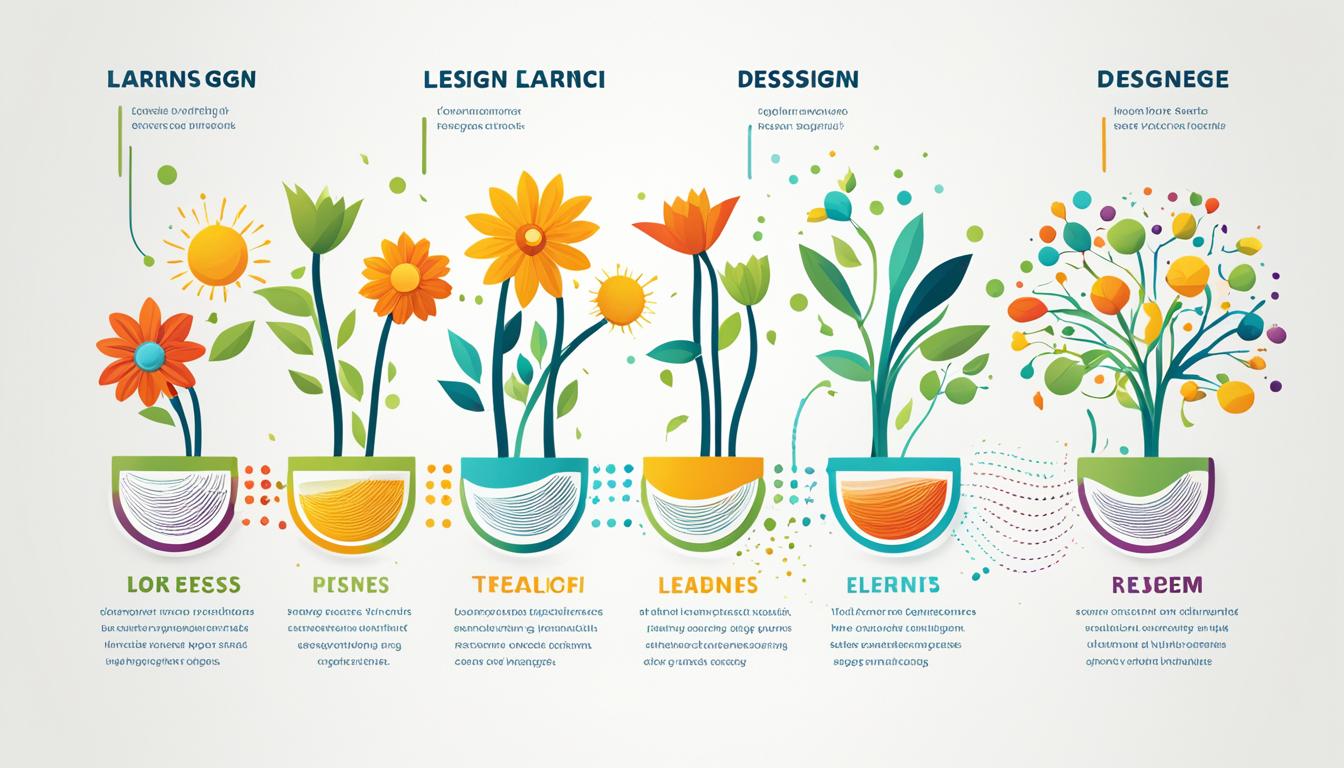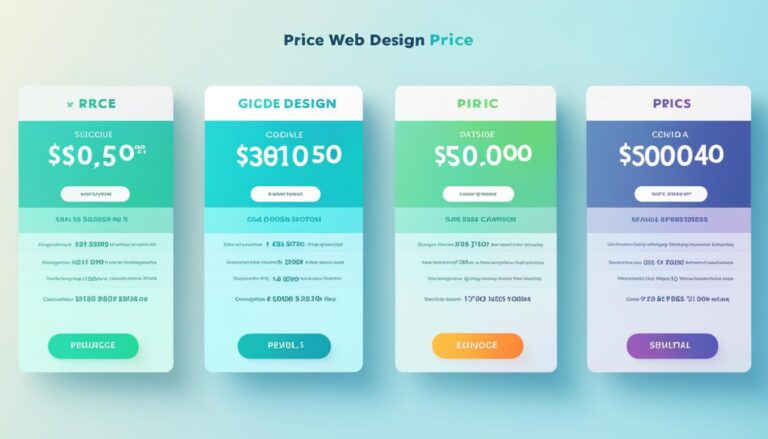Learn Website Design: Essential Tips & Guides
Welcome to the world of web design! In today’s digital landscape, where the internet plays a crucial role in our lives, learning website design has become a highly sought-after skill. With 4.66 billion internet users and 1.8 billion websites worldwide, having a solid understanding of web design can significantly impact your online presence.
So, if you’re wondering how to learn website design effectively, we’ve got you covered. In this comprehensive guide, we will take you through the essential tips and guides to help you master the art of web design and build impactful websites.
Learning web design offers a multitude of benefits. It empowers you to shape audience perception, build trust, improve reputation, increase organic traffic, reinforce marketing strategies, drive conversions, and generate leads. With the right knowledge and skills, you’ll be able to create visually captivating and user-friendly websites that leave a lasting impression.
Are you ready to embark on this exciting journey? Let’s dive in and explore the essential steps that will take you from a beginner to a proficient web designer.
Understanding the Basics of Web Design
Web design is a multi-faceted discipline that involves creating interfaces for websites, web applications, online services, and more. It encompasses various aspects such as sketching, wireframing, layouts, appearances, information hierarchy, accessibility, visuals, usability, user experience, and marketing.
Web designers need to be both artists and engineers, understanding how each interface element works and how it influences SEO, usability, and marketing. To become a web designer, it is important to learn the basics of web design, including color theory, typography principles, visual design principles, and interaction design.
Familiarizing yourself with designing software like Photoshop, Illustrator, Sketch, and others can also help in creating effective web designs. Following a structured web design process can ensure that websites meet client goals and adhere to standards and regulations.
Key Disciplines in Web Design
Web design is a broad field with various disciplines that intersect and work together to create compelling digital experiences. Some key disciplines in web design include:
- Color Theory: Understanding how colors impact user perception and evoke emotions.
- Typography Principles: Utilizing typography to enhance readability and convey brand personality.
- Visual Design: Creating aesthetically pleasing and visually engaging interfaces.
- Interaction Design: Designing intuitive and interactive elements that enhance user engagement.
Web Design Definition
Web design is the process of planning, conceptualizing, and creating websites. It involves considering user needs and expectations, creating visually appealing interfaces, and ensuring intuitive navigation. Web designers work closely with developers to bring their designs to life using HTML, CSS, and other web technologies.
“Web design is both an art and a science. It requires a balance between creativity and technical skills to deliver visually stunning and user-friendly websites.” – Rebecca Martinez, Web Design Expert
Tips for Learning and Applying Web Design
As you embark on your journey to learn web design, it’s important to start with simple and enjoyable projects. Creating a personal blog or showcasing your creative pursuits can provide an excellent platform to practice and apply your skills. These projects allow you to experiment and learn at your own pace, building a solid foundation for more complex designs.
When seeking inspiration for your web designs, turn to other talented designers for ideas and insights. Platforms like Awwwards, Behance, Dribbble, and the Webflow showcase feature an array of remarkable designs that can spark your creativity. Beyond the web, exploring art history and different design disciplines can expand your creative horizons, leading to fresh and innovative approaches in your web designs.
A content-first approach is crucial in the web design process. Having your content ready before diving into the design phase enables you to design with real content. This practice not only helps you make early adjustments based on the content’s structure and requirements but also ensures that your designs are optimized for effective communication and engagement.
When designing websites, keep in mind the fundamentals of user experience (UX) and user interface (UI) design. Design with simplicity and intuitiveness in mind, allowing users to navigate and interact with ease. Understanding the principles of design, such as visual hierarchy, color theory, and typography, empowers you to create aesthetically pleasing and functional web layouts. The layout plays a vital role in guiding users through the content, making it important to prioritize clarity and relevance in your designs.
Additionally, educating your clients about the value of an effective website is essential. Help them understand the impact of well-designed websites on their business goals, such as generating leads, enhancing brand reputation, and increasing conversions. Emphasize the importance of pricing based on the value your designs deliver rather than solely on competition, ensuring your work is valued and appreciated.
FAQ
How can I learn website design?
To learn website design effectively, you can follow a ten-step guide that covers the basics of web design, understanding the web design process, learning standard web design approaches, becoming responsive and mobile-friendly, adopting best practices for user interface and user experience, mastering usability principles, learning HTML and CSS, and gaining hands-on experience.
What are the benefits of learning web design?
Learning web design offers numerous benefits, including the ability to impact audience perception, build trust, improve reputation, increase organic traffic, reinforce marketing strategies, amplify conversions, and generate leads.
What does web design involve?
Web design is a multi-faceted discipline that involves creating interfaces for websites, web applications, online services, and more. It encompasses various aspects such as sketching, wireframing, layouts, appearances, information hierarchy, accessibility, visuals, usability, user experience, and marketing.
What do web designers need to know?
Web designers need to be both artists and engineers, understanding how each interface element works and how it influences SEO, usability, and marketing. They should also learn the basics of web design, including color theory, typography principles, visual design principles, and interaction design. Familiarizing themselves with designing software like Photoshop, Illustrator, Sketch, and others can also be helpful.
How can I find inspiration for web design?
You can find inspiration from other designers through platforms like Awwwards, Behance, Dribbble, and Webflow showcase. Looking beyond the web for sources of inspiration, such as art history and different types of design, can also expand your creative senses.
What are some tips for starting with web design projects?
It is recommended to choose simple and fun projects, such as creating a blog or showcasing your creative pursuits. Having content ready before you start designing allows you to design with real content and make early changes. Keeping your designs simple and intuitive, following UX and UI principles, and understanding the basics of layout can result in effective web designs.
How can I communicate the value of effective websites to clients?
It is important to educate your clients about the value of effective websites and communicate the importance of pricing based on value rather than competition.










